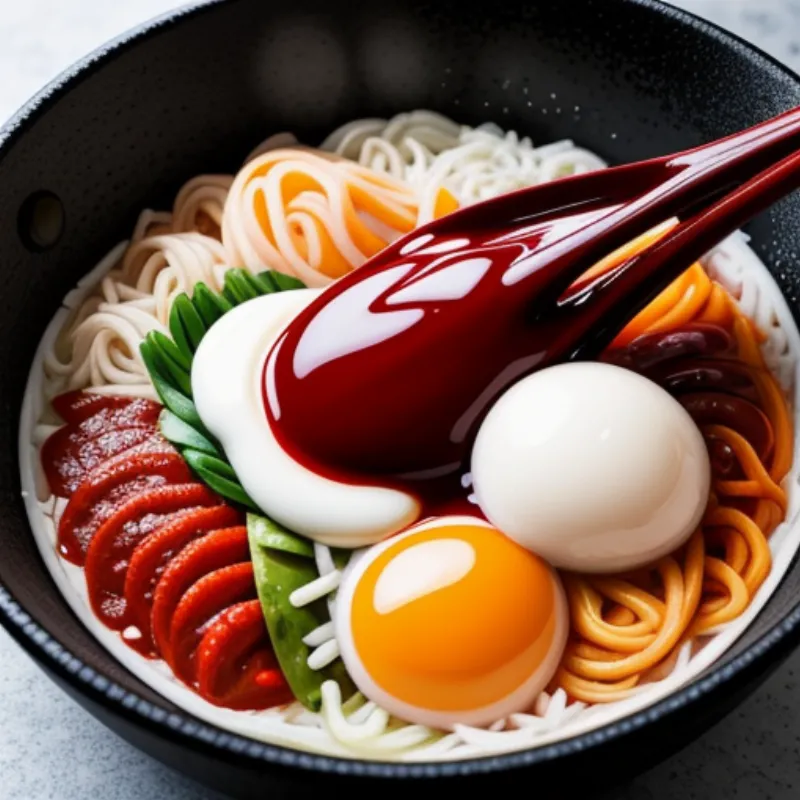Bibimbap sauce, also lovingly known as gochujang sauce, is the vibrant, flavorful soul of the iconic Korean mixed rice dish, bibimbap. This sauce is a delightful dance of sweet, savory, and spicy notes that will leave your taste buds begging for more. Whether you’re a seasoned bibimbap enthusiast or a curious foodie looking for your next culinary adventure, this comprehensive guide will empower you to craft the perfect bibimbap sauce at home.
Unlocking the Flavors of Korea
Bibimbap sauce is a beautiful representation of Korean cuisine – bold, balanced, and utterly irresistible. The magic starts with gochujang, a fermented Korean chili paste that lends a deeply savory, umami flavor with a slow-burning heat. We then round out the sauce with sweetness, tanginess, and aromatics for a taste bud-tantalizing experience.
Ready to embark on this flavor journey? Let’s gather our ingredients and get started!
Ingredients: A Symphony of Flavor
Core Ingredients:
- 2 tablespoons gochujang (Korean red chili paste)
- 1 tablespoon soy sauce
- 1 tablespoon rice vinegar
- 1 tablespoon honey or sugar
Flavor Enhancers:
- 1 teaspoon sesame oil, for that nutty aroma
- 1 clove garlic, minced, to add a bit of zing
- 1/2 teaspoon grated fresh ginger (optional), for a subtle warmth
- 1/4 teaspoon gochugaru (Korean chili flakes) (optional), for an extra kick
Did you know? Gochujang can range in spiciness. If you prefer a milder sauce, start with 1 1/2 tablespoons and adjust to taste.
Tools of the Trade
- Small mixing bowl
- Whisk or fork
Crafting Your Bibimbap Sauce Masterpiece: A Step-by-Step Guide
- Combine and Conquer: In your mixing bowl, whisk together the gochujang, soy sauce, rice vinegar, and honey (or sugar) until they transform into a smooth, harmonious blend.
- Infuse the Aromatics: Add the sesame oil, minced garlic, and optional ginger and gochugaru (if using). Whisk again to ensure all the flavors meld beautifully.
- Taste and Adjust: The hallmark of a great cook is tasting and adjusting! Dip a spoon into your sauce and give it a try. Need a touch more sweetness? A pinch of sugar will do the trick. Craving a bit more heat? Add another pinch of gochugaru.
Tips and Tricks from the Kitchen:
- Gochujang Variations: Experiment with different brands of gochujang – each one boasts its unique flavor profile.
- Freshly Grated Ginger: While optional, freshly grated ginger adds a depth of flavor that you simply can’t replicate with the powdered version.
- Storage Savvy: Store any leftover sauce in an airtight container in the refrigerator for up to 1 week. The flavors will continue to develop and deepen over time.
Serving Up a Feast of Possibilities
Bibimbap sauce isn’t just for bibimbap (although it’s undeniably delicious in it!). This versatile sauce can elevate a multitude of dishes:
- Dipping Delights: Serve it as a dipping sauce for Korean dumplings (mandu), spring rolls, or even chicken skewers.
- Noodle Nirvana: Toss it with your favorite noodles for a quick and flavorful meal.
- Veggie Booster: Drizzle it over roasted vegetables for a touch of sweetness and heat.
“Bibimbap sauce is a pantry staple in my kitchen,” says Chef Jin Lee of Seoul’s acclaimed restaurant, Han Cook. “Its versatility is unmatched. I use it in everything from marinades to dipping sauces.”
Bibimbap Sauce FAQs
Q: Can I make bibimbap sauce ahead of time?
A: Absolutely! In fact, making the sauce in advance allows the flavors to really meld and develop.
Q: I don’t have rice vinegar. Can I use another type of vinegar?
A: While rice vinegar lends a milder, sweeter tang, you can substitute it with apple cider vinegar in a pinch.
Q: How spicy is bibimbap sauce?
A: The spice level can vary depending on the brand of gochujang you use and your personal preference. Start with a smaller amount of gochujang and gochugaru and adjust to your liking.
Embrace Your Inner Chef
There you have it – your guide to crafting the most flavorful bibimbap sauce. Now it’s your turn! Gather your ingredients, put on your apron, and experience the joy of homemade. Don’t forget to share your culinary creations with us in the comments below! We’d love to hear about your bibimbap sauce adventures.
 Bibimbap Sauce Ingredients
Bibimbap Sauce Ingredients
 Whisking Bibimbap Sauce
Whisking Bibimbap Sauce
Are you ready to explore more Korean flavors? Check out our recipes for How to Make Makgeolli Sauce and How to Make Jeon Sauce. Your taste buds will thank you.
